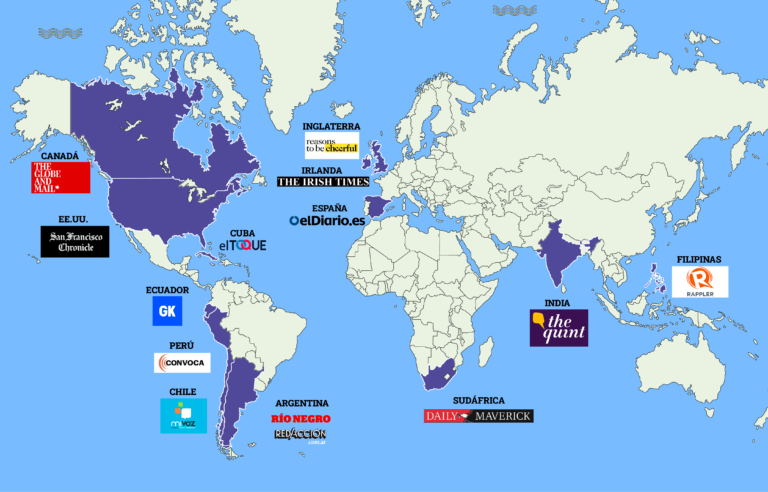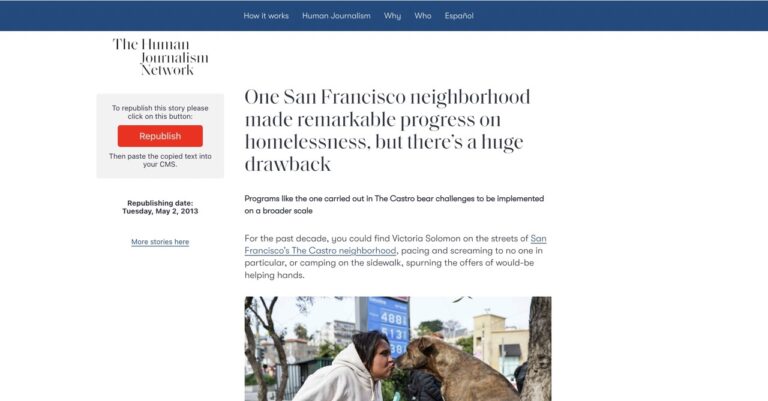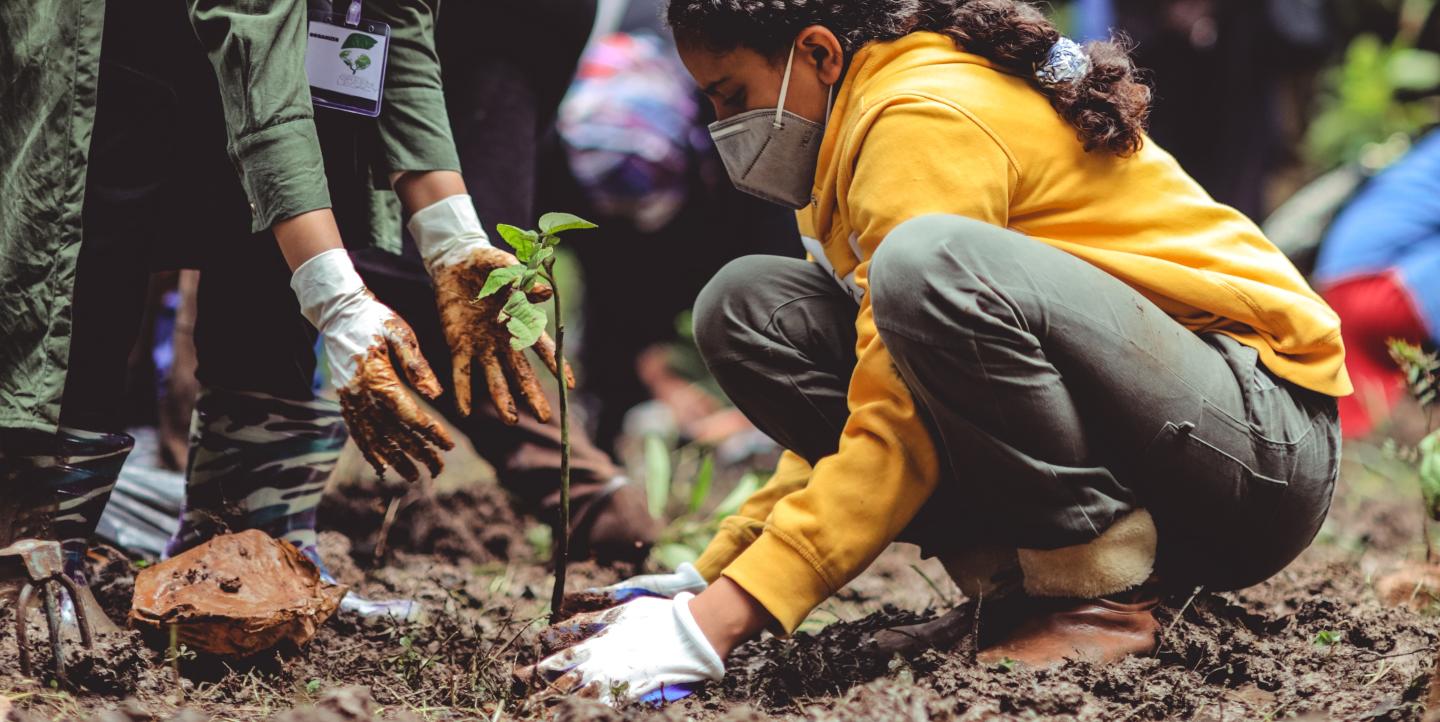Picture this: A group of illegal fishermen in a Philippine province turned into "guardians of the sea." A community in India that for every girl born plants 111 trees in a ritual that has reduced the number of child marriages as well as floods. The women of the Nunavut people of Canada who are in charge of managing childbirth and care for new mothers, or the construction of a community in Cuba to provide protection to survivors of sexual violence.
These were the topics of some of the stories that were part of the 2023 Global Edition of the Human Journalism Network, an initiative designed as a platform to share feature stories that "portray how people and communities face our most urgent social problems.”
In the midst of an increasingly chaotic world that is inevitably reflected in daily reporting and that has led to other phenomena such as "news avoidance," these types of stories seem to be a refreshing breeze, a brake on the "extreme negativity" of the media.
Such is the conviction of Argentine journalist Chani Guyot, founder of the Human Journalism Network [and a Knight Fellow with the International Center for Journalists (ICFJ)], for whom enhancing the reach of these stories — which he calls "human journalism" — has become a professional mission.
 Human Journalism Network Team. Clockwise from top left corner: Lucia Cholakian Herrera (editor), Paula Felgueras (translator), Natalia Zuluaga (coordinator), and Chani Guyot (director).
Human Journalism Network Team. Clockwise from top left corner: Lucia Cholakian Herrera (editor), Paula Felgueras (translator), Natalia Zuluaga (coordinator), and Chani Guyot (director).
"The media has a responsibility to showcase society's problems in its 'watchdog' role, but we believe it also has a responsibility to showcase the stories of the people and organizations that are seeking to solve those problems, because those stories exist and are often underrepresented," Guyot, who is also the founder of the digital news outlet Red/Acción, told LatAm Journalism Review (LJR).
The Human Journalism Network started in 2021 as a "pilot" project, according to Guyot. At that time, the platform was intended for allied media, or partners, in Latin America. For that Latin American edition, eight news outlets participated and shared five stories each, for a total of 40 stories. In addition to sharing their stories, the media partners were free to republish the texts shared by the other news outlets.
After going on hiatus during 2022, towards the end of that year and seeing the impact they had achieved with the pilot, the Network's team thought of having a global edition in which media in English and Spanish would participate. With the support of ICFJ, they began the call for entries last February. Although they initially planned to have 20 participating news outlets, 10 in each language, they were able to bring together 14 of them.
Guyot highlighted the geographic and thematic diversity as one of the aspects in this edition. From Latin America, the following news outlets participated: Mi Voz (Chile), El Toque (Cuba), GK (Ecuador), Convoca (Peru), and Río Negro and Red/Accción (Argentina). Also participating were Globe and Mail (Canada), elDiario.es (Spain), San Francisco Chronicle (United States), Rappler (Philippines), The Quint (India), The Irish News (Ireland), Reasons to be Cheerful World (United Kingdom), and Daily Maverick (South Africa).
"This makes it super interesting because truly the readers of each of these news outlets have the possibility to join in with these stories that are, as I was telling you, locally developed," Guyot said. "And another interesting thing to me about this edition of the Network is that the topics we deal with, many have to do with the social challenges we face as a society and as a world."
 News outlets that participated in the Global Edition 2023 of the Human Journalism Network. (Image: Courtesy Network/Acción).
News outlets that participated in the Global Edition 2023 of the Human Journalism Network. (Image: Courtesy Network/Acción).
In that sense, the climate crisis was a topic present in this round, but there were also stories focused on inclusion, particularly gender, or about community leaders. Stories on education, health, migration, art, social innovation, poverty, and sustainability were part of the edition.
"When we talk about human journalism, what we do is that we have a very precise definition of the type of journalism we seek to share. It’s journalism done on the ground, that is, reported. It's stories of people or organizations that are looking to solve social challenges, basically," Guyot said. "It's a definition similar to solutions journalism, but a little bit broader, because in some cases we can share solutions that are on the way or problems that are not so well known and reported."
In addition to this approach, Guyot points out that the Network always looks for the highest standards in journalism — excellent reporting and excellent writing. But there is also a vital component that adds value to the Network: The editing and translation processes carried out by two journalists from Red/Acción, the Network's driving force.
Editing, as Guyot explains it, is twofold. In addition to the editing that each news outlet does when it delivers a story, the Network’s team must do an edit in the original language, in which they give a more global touch to the stories. For example, explaining terms, places or customs that are "obvious" to a local audience, but may not make sense to an international audience. Once finished with this edition, the story is translated into the other language (either Spanish or English) and a second edition of the translation follows.
“It is a process in which we place much, much emphasis, because the value of the Network depends a lot, fundamentally, on the quality of the stories that are shared through it,” Guyot said.
For Guyot, the main benefit of the Network is that participating media will be able to expand the audiences they reach with their stories.
“We want this quality journalism, which is practiced throughout the world, to reach new audiences,” explained the Network's director. “And these stories, which are local or regional stories, because of how they are reported, because of how they are edited, at some point they are also, I’d say, universal stories. And from there they can have relevance for media from other latitudes.”
 Screenshot from the Human Journalism Network platform. This San Francisco Chronicle story has been the most republished one so far.
Screenshot from the Human Journalism Network platform. This San Francisco Chronicle story has been the most republished one so far.
Experience with these two editions has shown that this is indeed the case. The case of this global edition has been much clearer since each story has a PixelPing tag that allows them to track the reach of a republishing: They know how many media have republished which stories and with what reach (pageviews). Guyot emphatically clarifies that they do not collect information about the audience, but only the reach of the story.
According to Network records shared with LJR, the most republished story has been the San Francisco Chronicle's Spanish-language story titled “One San Francisco neighborhood made remarkable progress on homelessness. But there’s a huge drawback.” And the El Toque story titled “A mentoring program boosts Cuban women in the creative industries,” the Network's records estimate that it managed to multiply its reach 15-fold.
Now, after completing this experience, Guyot and his team are planning a second global edition to be launched in the last quarter of 2023. Also aimed at media that publish in Spanish and English, this edition aims to add more news outlets and to continue learning.
“Behind the Human Journalism Network is a very important idea regarding the value of extreme collaboration [...] everything we have to gain in this industry in terms of collaboration in an extremely challenging context because of the loss of reader trust, because of the way the business is eroding and so on and so forth,” Guyot said. “And while sharing content might seem like a simple collaboration, it's extreme because in reality each news outlet is trusting that the other news outlet did its job well: Its reporting, its editing, and so on and so forth. That's why we also put so much emphasis on the selection of partners, in which media join [the Network], and on all the editing and translation work.”
Chani Guyot is an ICFJ Knight Fellow.
This story was originally published on LatAm Journalism Review and republished on IJNet with permission.
Photo by Eyoel Kahssay on Unsplash.

